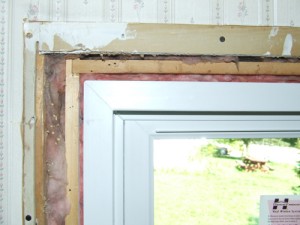2010 Energy Efficiency Tax Credits Ending Soon!
Federal Tax Credits for Energy Efficiency Set To Expire


Energy Efficient Home Improvements
There are several great energy efficient home improvements that qualify for the Federal Tax Credits including:
- Windows and Doors
- Insulation
- Roofing
- HVAC
- Non Solar Water Heaters
- Biomass Stoves
Several of those (windows, doors and insulation) are home improvement projects that many of you can do yourself and save even more money.
Adding additional attic insulation can drastically improve the energy efficiency of your home. Whether you choose to roll out a new blanket of fiberglass insulation or six inches of new cellulose insulation you’re sure to see a savings in those heating and cooling bills.
Probably the home improvement ROI is installing energy efficient replacdment windows. Replacing old drafty windows may sound like a job for the pro’s but it’s certainly a project within reach of many advanced DIY’ers. We’ve written several articles on How To Install Replacement Windows if you’re interested in learning more about how it’s done.
If you do have replacement windows installed by a contractor and your home was built prior to 1978 be sure your contractor has his/her Lead Paint Certification.
$1,500 Tax Credit Will End on December 31, 2010
If you want to take advantage of the energy efficient tax credits you need to move quickly. These tax credits can be as high as $1,500 which should offset a good chunk of any money spent on these home improvements. With the always rising cost of fuel the payback will continue for years to come.
Recent Posts
Framing Stick Nailer vs Coil Nailer
Which is Better a Stick Nailer or Coil Nailer? Framers have many choices in nailers…
How Many Roofing Nails Per Square of Shingles
Estimating How Many Nails for a New Roof When it comes to estimating materials for…
Composite / PVC Decking – Layout Tips & Advice
Composite / PVC Decking Layout Tips and Advice Composite and PVC decking have really changed…
Benefits of an ERV System (Energy Recovery Ventilator)
Benefits of ERV Systems (Energy Recovery Ventilator) If you're building a new home or doing…
Vermiculite Attic Insulation Abatement
Vermiculite Attic Insulation If your home was built before 1990 there is a chance it…
Nuisance Tripping of AFCI (Arc Fault) Circuit Breakers
Arc Fault (AFCI) Circuit Breakers Tripping Often An arc-fault circuit interrupter (AFCI) or arc-fault detection…